Abstract
In the trypsin-mediated semisynthetic transformation of pig insulin into an ester of insulin of human sequence, the B30 alanine residue of the pig hormone is replaced by an ester of threonine. The mechanism of this reaction was investigated by carrying out the transformation in a medium containing water enriched with 18O. Subsequent analysis by combined g.l.c.-mass spectrometry demonstrated that the oxygen isotope, is incorporated into the B29 carbonyl group of the insulin ester product. This result, together with those of appropriate controls, supports the conclusion that the transformation occurs, in the system studied, by a mechanism involving hydrolysis followed by coupling, and not by direct transpeptidation as has been previously found the case for another such system [Markussen & Schaumberg (1983) in Peptides 1982 (Bláha & Malon, eds.), pp. 387-394, W. de Gruyter, Berlin and New York].
Full text
PDF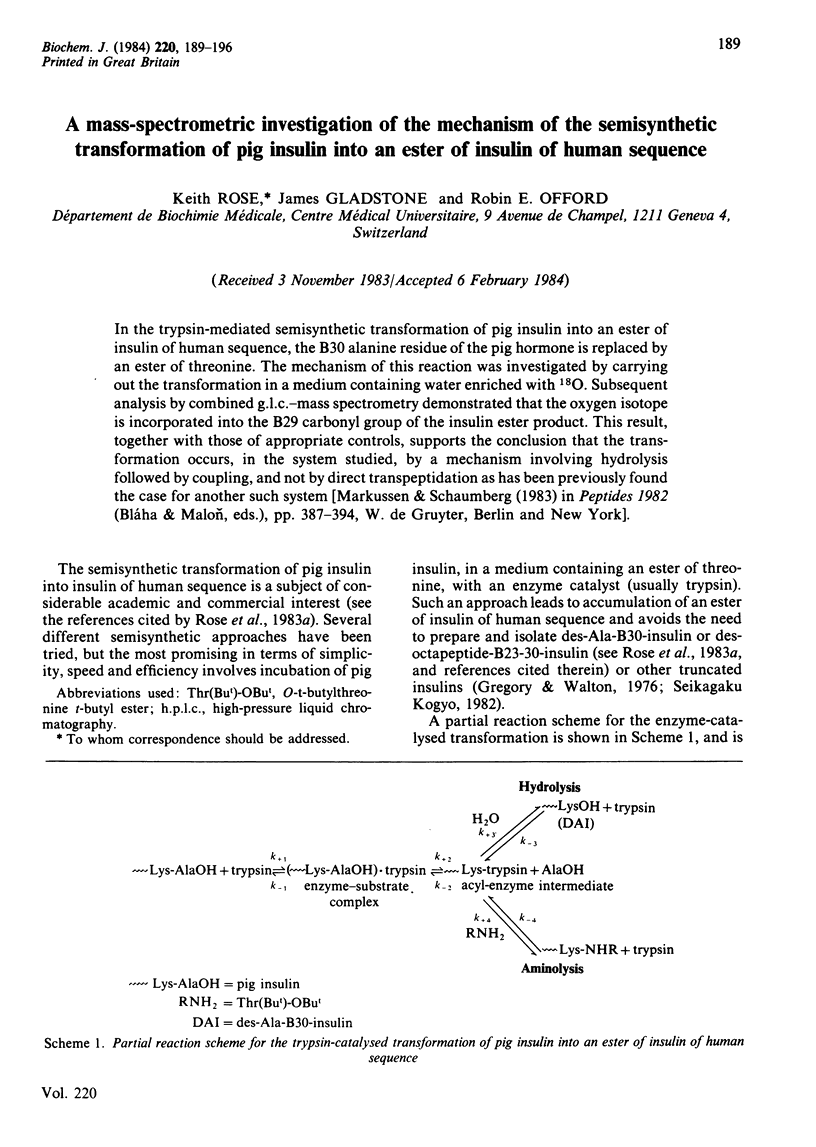
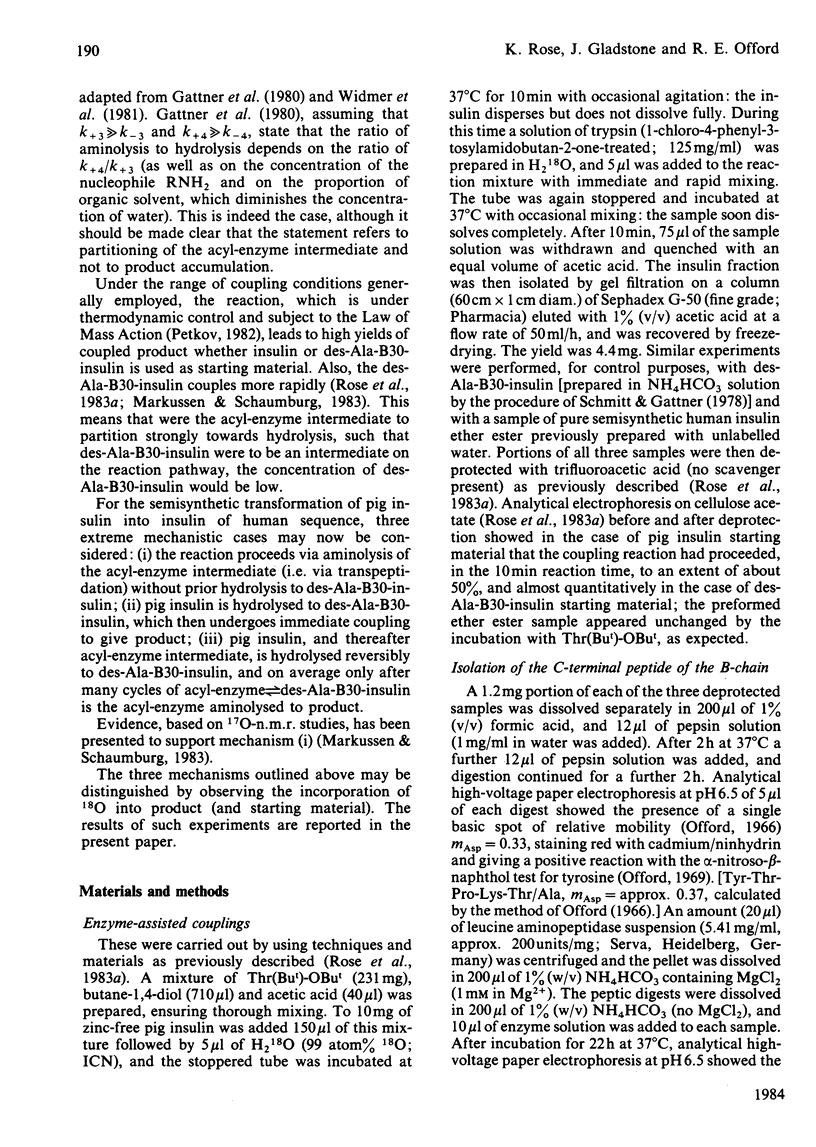
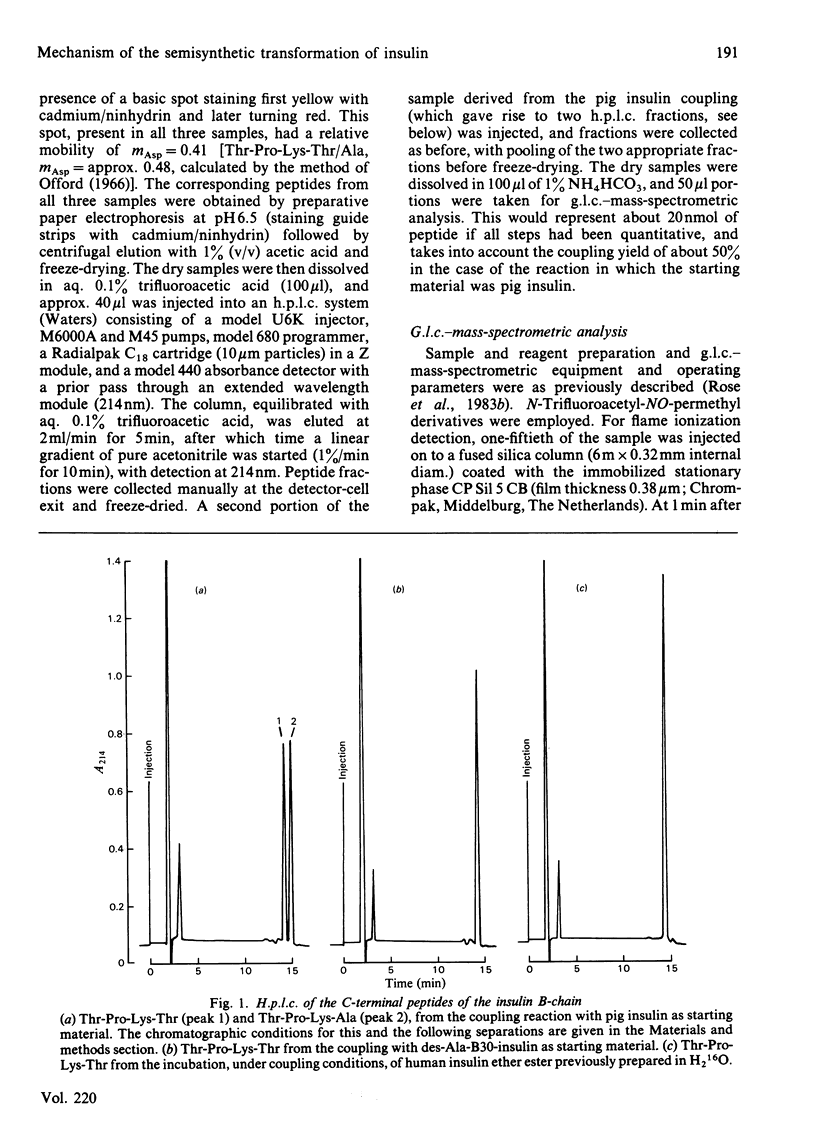
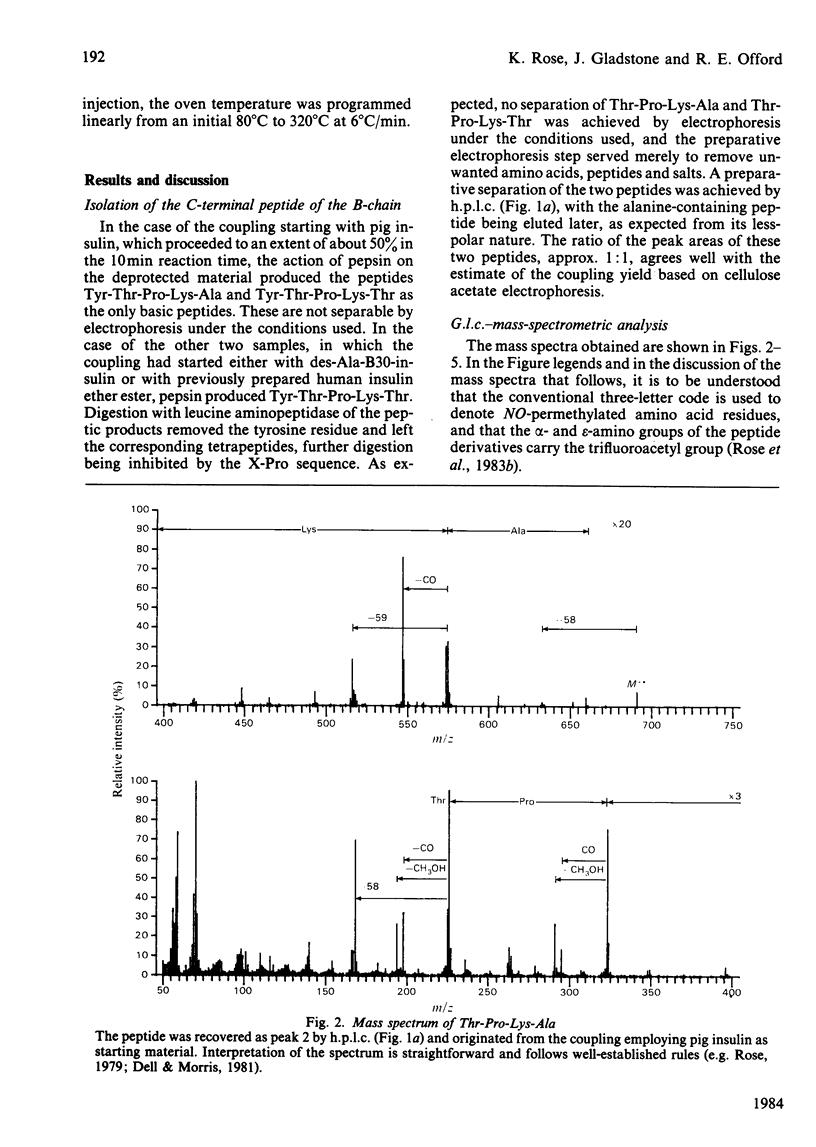
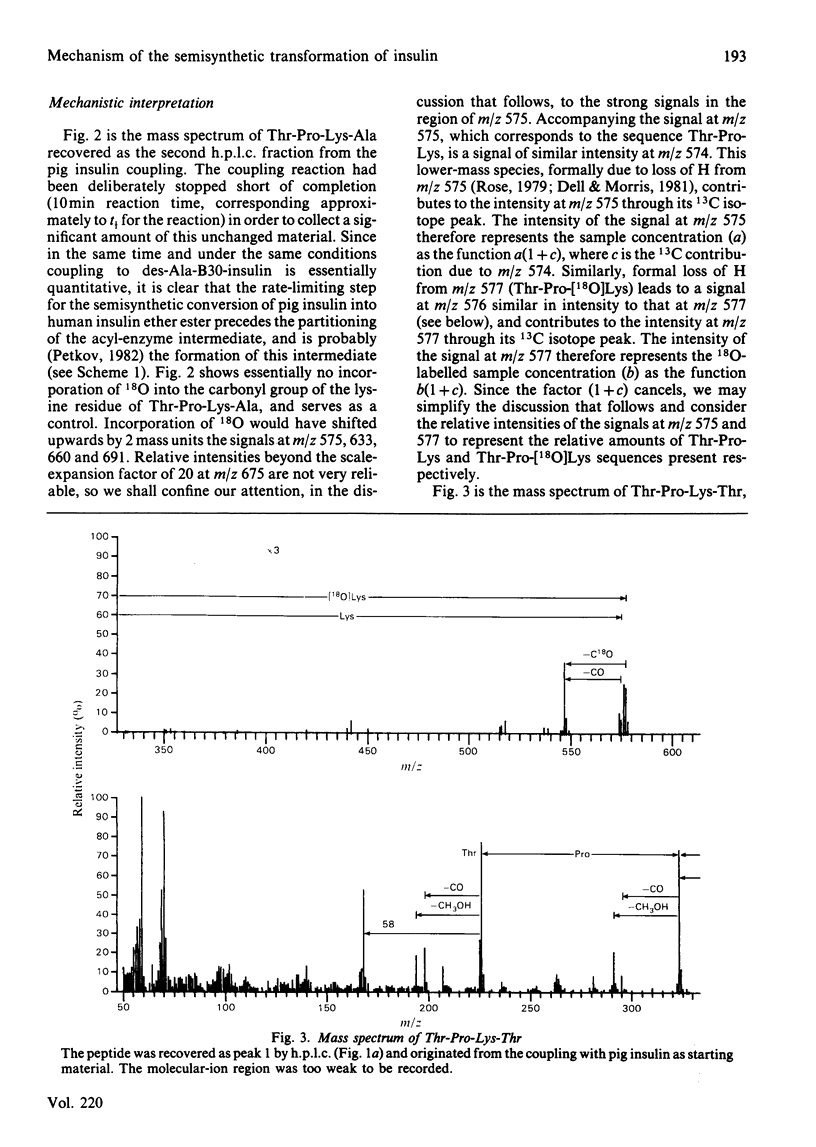
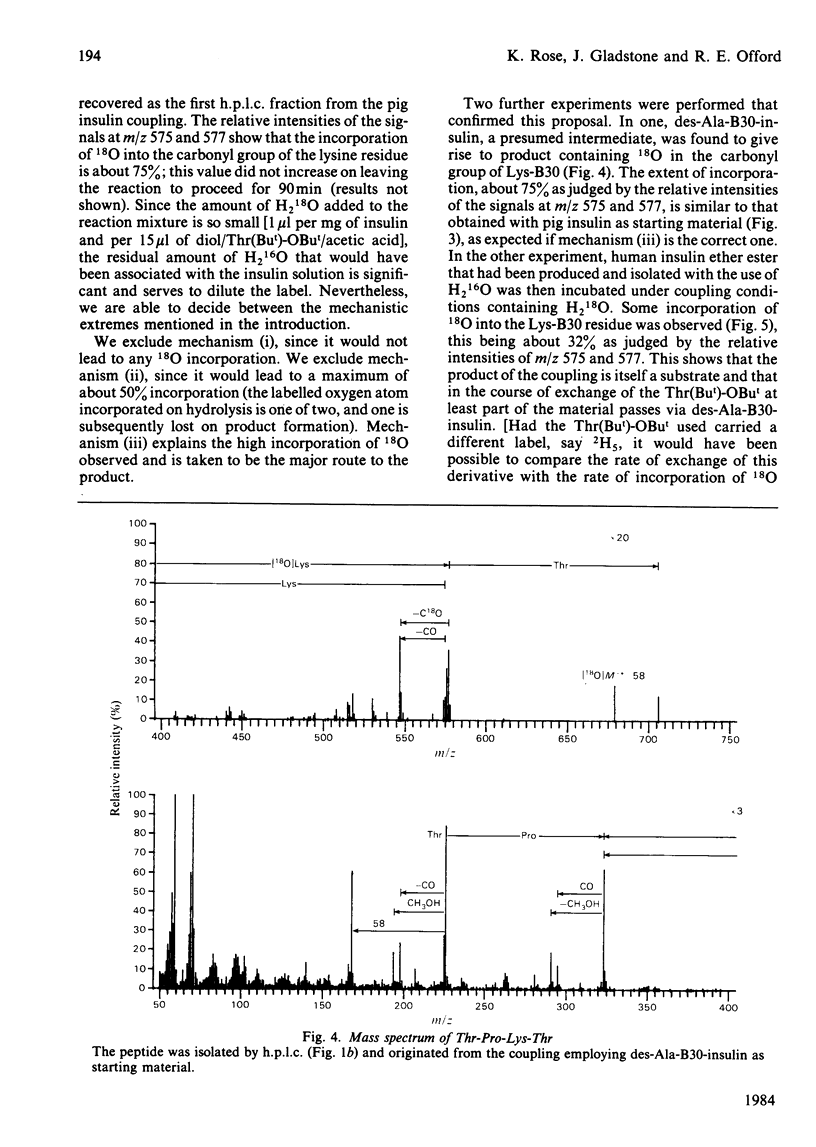
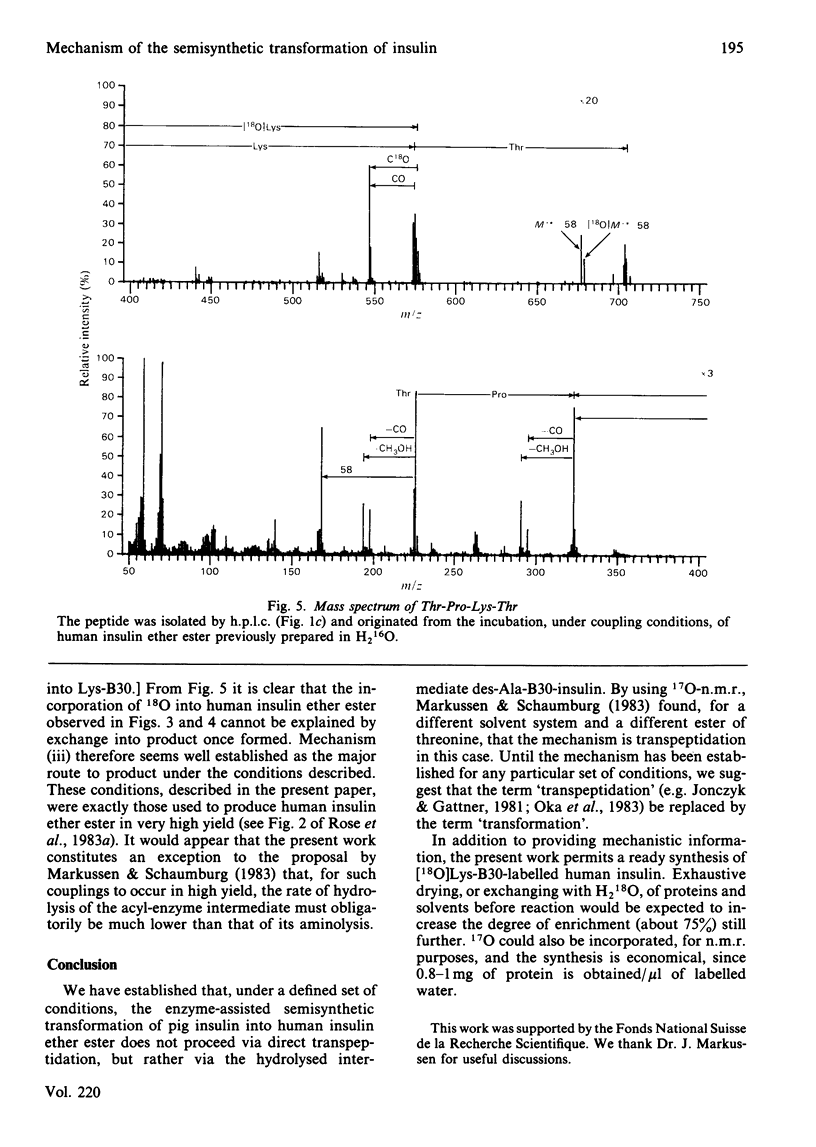
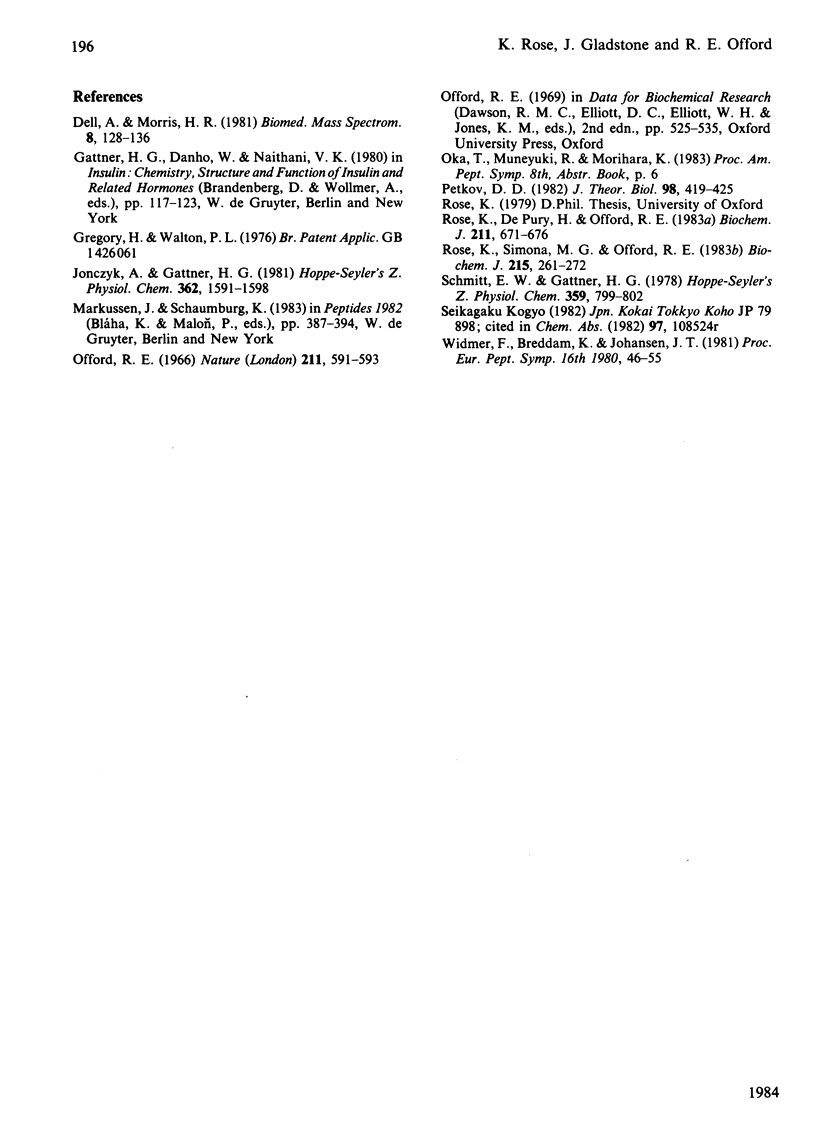
Selected References
These references are in PubMed. This may not be the complete list of references from this article.
- Dell A., Morris H. R. Primary structure of a chloramphenicol acetyltransferase: mass spectrometric studies. Biomed Mass Spectrom. 1981 Mar;8(3):128–136. doi: 10.1002/bms.1200080310. [DOI] [PubMed] [Google Scholar]
- Jonczyk A., Gattner H. G. Eine neue Semisynthese des Humaninsulins. Tryptisch-katalysierte Transpeptidierung von Schweineinsulin mit L-Threonin-tert-butylester. Hoppe Seylers Z Physiol Chem. 1981 Dec;362(12):1591–1598. [PubMed] [Google Scholar]
- Offord R. E. Electrophoretic mobilities of peptides on paper and their use in the determination of amide groups. Nature. 1966 Aug 6;211(5049):591–593. doi: 10.1038/211591a0. [DOI] [PubMed] [Google Scholar]
- Petkov D. D. Enzyme peptide synthesis and semisynthesis: kinetic and thermodynamic aspects. J Theor Biol. 1982 Oct 7;98(3):419–425. doi: 10.1016/0022-5193(82)90128-x. [DOI] [PubMed] [Google Scholar]
- Rose K., De Pury H., Offord R. E. Rapid preparation of human insulin and insulin analogues in high yield by enzyme-assisted semi-synthesis. Biochem J. 1983 Jun 1;211(3):671–676. doi: 10.1042/bj2110671. [DOI] [PMC free article] [PubMed] [Google Scholar]
- Rose K., Simona M. G., Offord R. E. Amino acid sequence determination by g.l.c.--mass spectrometry of permethylated peptides. Optimization of the formation of chemical derivatives at the 2-10 nmol level. Biochem J. 1983 Nov 1;215(2):261–272. doi: 10.1042/bj2150261. [DOI] [PMC free article] [PubMed] [Google Scholar]
- Schmitt E. W., Gattner H. G. Verbesserte Darstellung von Des-alanylB30-insulin. Hoppe Seylers Z Physiol Chem. 1978 Jul;359(7):799–802. [PubMed] [Google Scholar]


